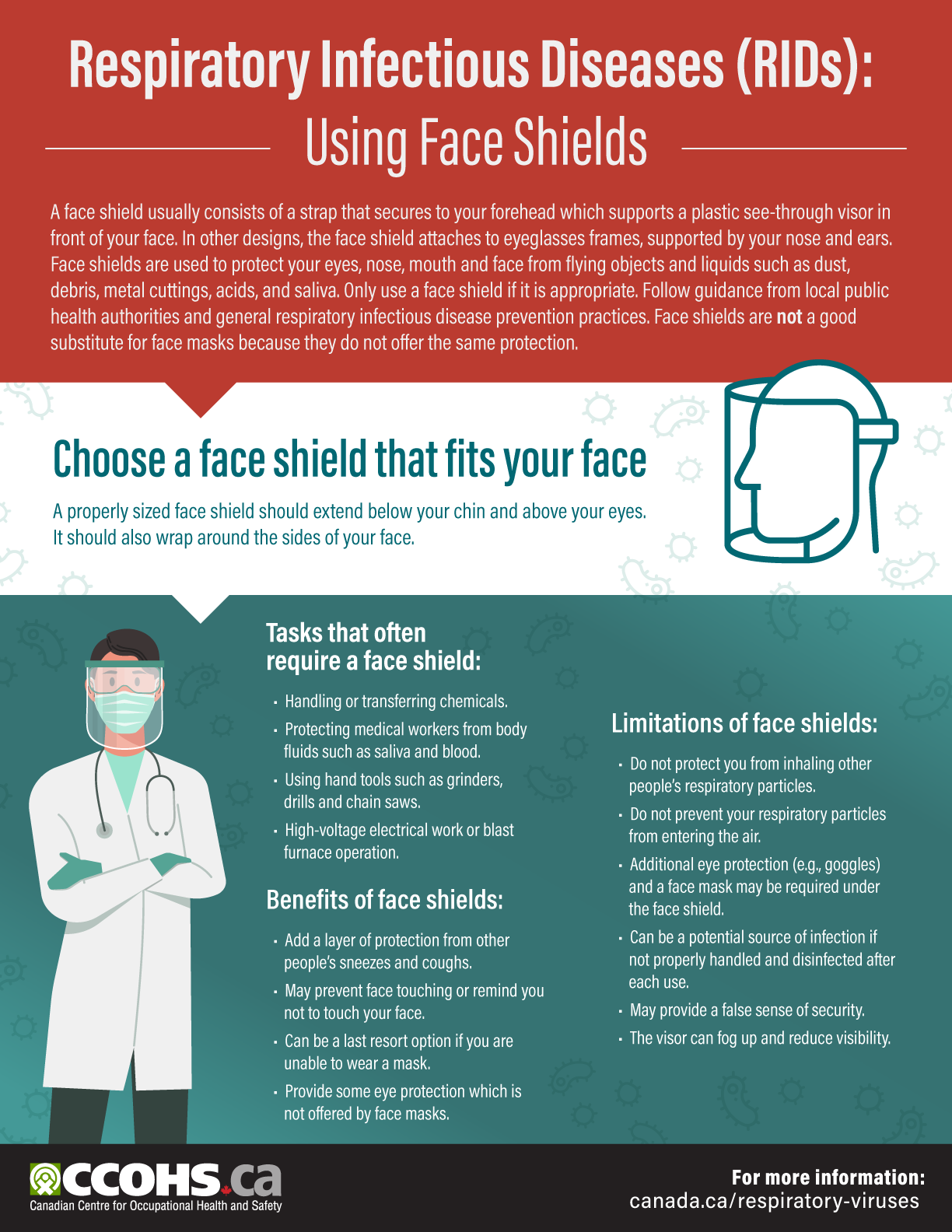Using Face Shields Infographic and its text description

Description: Respiratory Infectious Diseases (RIDs): Using Face Shields
A face shield usually consists of a strap that secures to your forehead which supports a plastic see-through visor in front of your face. In other designs, the face shield attaches to eyeglasses frames, supported by your nose and ears. Face shields are used to protect your eyes, nose, mouth and face from flying objects and liquids such as dust, debris, metal cuttings, acids, and saliva. Only use a face shield if it is appropriate. Follow guidance from local public health authorities and general respiratory infectious disease prevention practices. Face shields are not a good substitute for face masks because they do not offer the same protection.
Choose a face shield that fits your face
A properly sized face shield should extend below your chin and above your eyes. It should also wrap around the sides of your face.
Tasks that often require a face shield:
- Handling or transferring chemicals.
- Protecting medical workers from body fluids such as saliva and blood.
- Using hand tools such as grinders, drills and chain saws.
- High-voltage electrical work or blast furnace operation.
Benefits of face shields:
- Add a layer of protection from other people’s sneezes and coughs.
- May prevent face touching or remind you not to touch your face.
- Can be a last resort option if you are unable to wear a mask.
- Provide some eye protection which is not offered by face masks.
Limitations of face shields:
- Do not protect you from inhaling other people’s respiratory particles.
- Do not prevent your respiratory particles from entering the air.
- Additional eye protection (e.g., goggles) and a face mask may be required under the face shield.
- Can be a potential source of infection if not properly handled and disinfected after each use.
- May provide a false sense of security.
- The visor can fog up and reduce visibility.
More information: canada.ca/respiratory-viruses
Document last updated on: 2024-01-24
